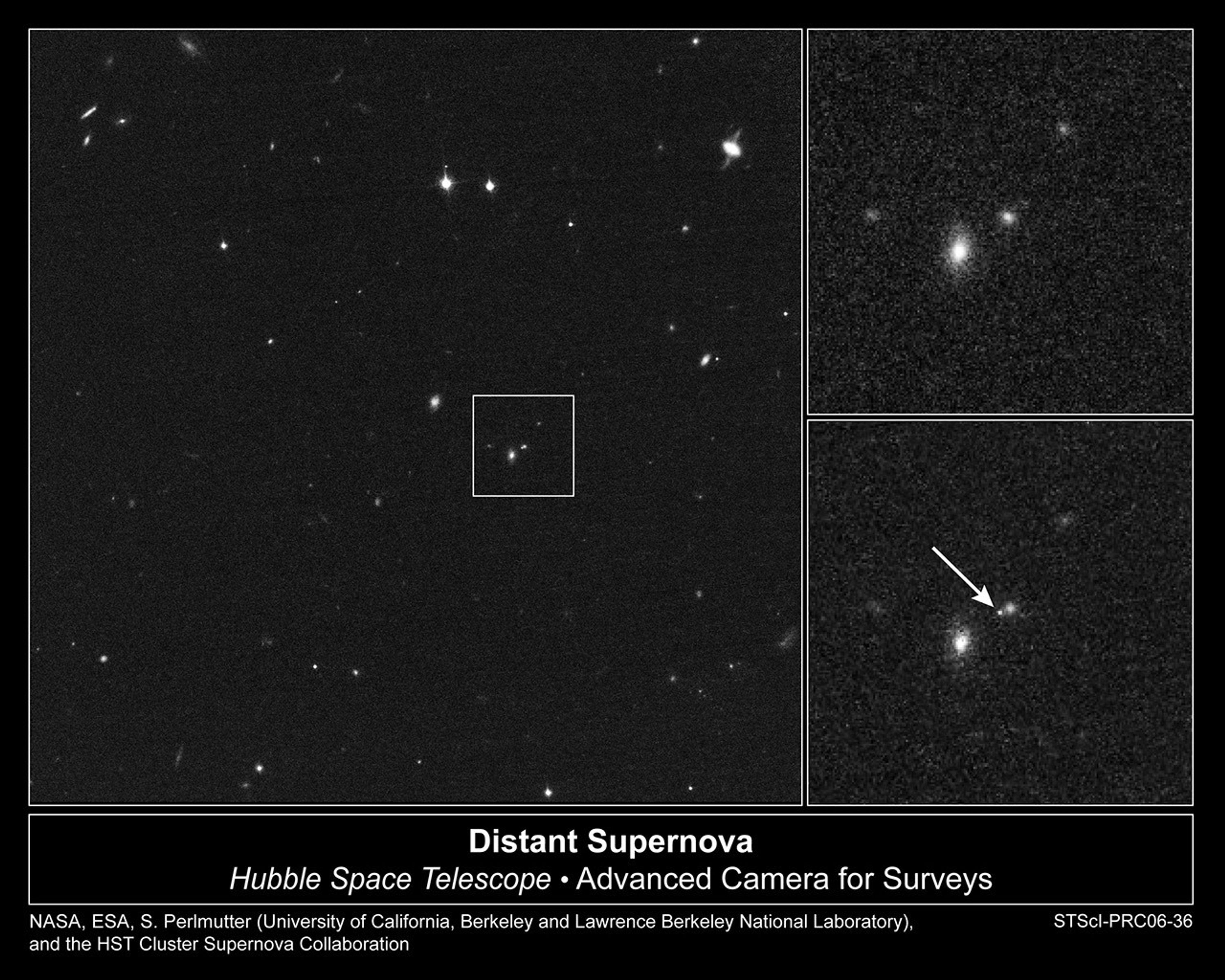After a brief hiatus, the Advanced Camera for Surveys aboard NASA's Hubble Space Telescope is back in business, probing the far reaches of space in a quest to understand the true nature of the universe's most dominant constituent: dark energy.
This is one of the first images of the universe taken after the ACS camera resumed science operation on July 4th. The camera was offline for nearly two weeks as NASA engineers switched to a backup power supply after the camera's primary power supply failed.
The picture on the left is of a rich galaxy field containing a distant galaxy cluster 9 billion light-years away (redshift of z = 1.4). In a program conducted by Saul Perlmutter of the University of California at Berkeley, Hubble periodically revisits about 20 distant galaxy clusters on a "fishing trip" to capture the glow of a class of exploding star called a Type Ia supernova. The selected clusters were chosen because they allow astronomers to study dark energy at a distance too great to be easily observed from the ground.
Type Ia supernovae are bright celestial distance markers that are invaluable for measuring how dark energy is influencing the universe. Ultimately, detailed observations like this will allow astrophysicists to better understand the nature of dark energy and its influence on the future evolution of the universe.
When Hubble looked at this field in April 2006, (upper right) no supernova was evident. Hubble first saw the supernova in June 2006, in a field galaxy that is one billion light-years closer (redshift value of z = 1.2) to us than the more distant cluster. Right after the ACS was returned to operation Hubble revisited the field to make measurements of the fading stellar explosion (arrow lower right). The bright core of the host galaxy is adjacent to the glowing supernova. A supernova can briefly become as bright as an entire galaxy of stars.
The quality of the April and July images demonstrate that the ACS is operating perfectly and sending back detailed images of the distant universe.
Discovered in 1998, dark energy seems to percolate out of empty space and provides a repulsive force that is causing the universe to expand at an ever-faster rate.
































